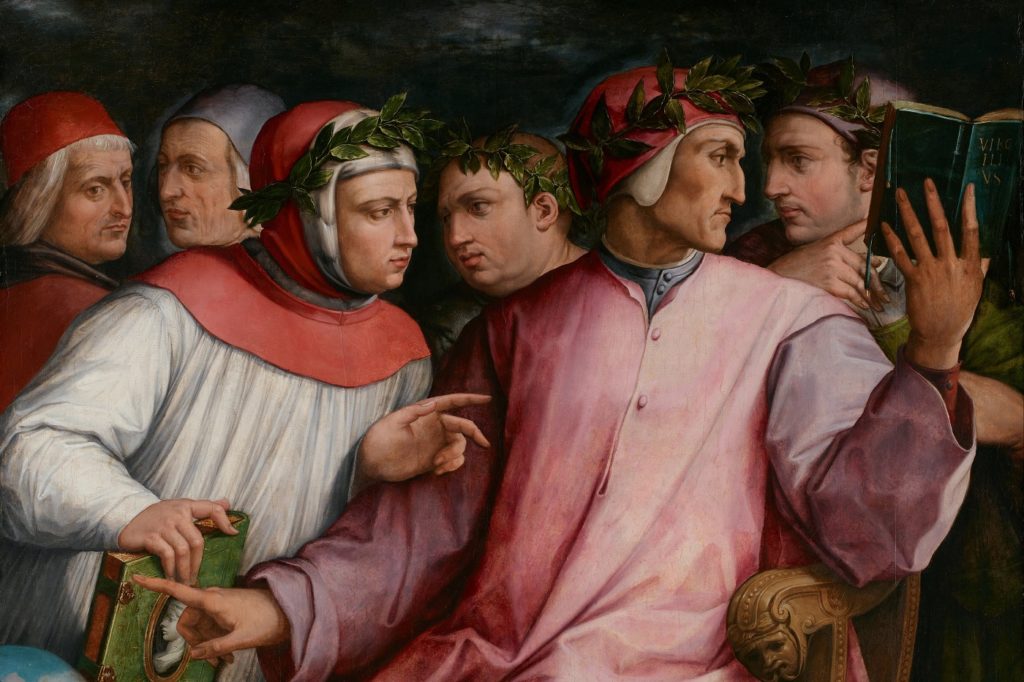Suppose you were living at a time when all around you, it seemed, civilization was breaking down. Political institutions were so little respected that the only way they could compel obedience was by increasing surveillance, multiplying laws, and tightening enforcement. People did not trust their leaders and suspected that elites were only interested in themselves. Many leaders were tyrannous, ignoring constitutional norms. Religious leaders engaged in scandalous behavior, and religious faith was losing its hold over the educated classes. Standards of personal behavior had collapsed, and it seemed that most people had forgotten what even ordinary decency was. Examples of upright character were hard to find, heroism almost unknown. The young went to universities only to learn how to earn money and achieve status. Even the military had grown corrupt. A great pandemic had taken many lives and filled people with fear. No one believed any more that medical science was honest about its ability to cope with the disease.
Welcome to the fourteenth century.
The world I have just described was that of the mid-fourteenth century, as seen through the eyes of Francesco Petrarca, or Petrarch, the most famous poet of his time and the true founder of the Italian Renaissance. As my description of the times implies, it resembles our own world in certain key respects.
The historical parallels between fourteenth-century Europe and our own times can be useful to us in our current civilizational crisis. Petrarch decided to do something about the crisis of Christendom in his own era, and the path to reform he opened up, in my opinion, was not only highly successful, but imitable. He aimed to create a new synthesis between classical and Christian civilization, to use the resources of antiquity to heal the spiritual diseases of his own time. What he and his followers created over the next century and a half is known to historians as the Renaissance, the rebirth of antiquity. It followed a formula that can still work today.
Start your day with Public Discourse
Sign up and get our daily essays sent straight to your inbox.You too can build your own Renaissance.
What Petrarch and his followers created over the a century and a half is known to historians as the Renaissance, the rebirth of antiquity. It followed a formula that can still work today. You too can build your own Renaissance.
The New Meritocracy: Moral Character and Practical Wisdom
The tool Petrarch invented to repair the collapse of civilization was known in his time as the humanities, the studia humanitatis, sometimes also called in Latin the optimae artes, litterae bonae, litterae humaniores: the best arts, good letters, the letters that made you more human.
These were not the same as the liberal arts. Classical antiquity invented the liberal arts, the skill set you needed to be an educated person. This included knowledge of Latin (grammar), how to present your thoughts effectively in language (rhetoric), how to think clearly (logic). These were the most basic skills, called the trivium. Quantitative skills were also needed. Arithmetic and geometry provided the basic techniques that were then applied to calculating the motions of the planets (astronomy) or understanding the mathematical basis of harmony (music). These four arts were together called the quadrivium. These studies were organized into the Seven Liberal Arts in late antiquity and were taught throughout the Middle Ages.
Eventually, in the twelfth century, they were eclipsed by the higher studies of scholasticism: law, medicine, theology. In the universities, grammar and logic became speculative sciences, remote from practical use. Philosophy began to be taught, but with an emphasis on natural science—learning the way nature worked—in preparation for the study of theology. The only moral work that gained a secure place in the curriculum was Aristotle’s Ethics, but it was not taught in a way that aimed to reform the character of those who studied it. The approach was close to the spirit of analytical philosophy in modern academe: ethical problems were analyzed in minute detail, but not in a way that made actual moral demands on students.
The scholastic approach to ethics is precisely the opposite of what Petrarch wanted to do with the studia humanitatis. He and his followers invented a new form of education whose principal purpose was to develop good moral character and practical wisdom.
In their view, the souls of all human beings contained both good and bad, but a well-designed curriculum could help cultivate the good and make students ashamed to do the bad. It could impart “true nobility” to human nature—not the kind of nobility inherited from forebears or acquired from titles handed out by dishonorable authorities, but the kind of nobility that came from true, personal distinction, a distinction gained through study, effort, and admiration earned honestly from one’s peers. Petrarch’s view and that of his followers was that persons with true nobility could and should provide the leadership to reform Christendom. So you could say that Petrarch and his followers invented a new kind of meritocracy.
Petrarch and his followers invented a new form of education whose principle purpose was to develop good moral character and practical wisdom.
Christianity and Renaissance Humanism
The movement Petrarch founded is known in modern scholarship as “Renaissance humanism.” The word “humanism” raises hackles in some quarters since we associate the word today with modern humanism, which is explicitly hostile to religion. I’ve described elsewhere why Renaissance humanism is an entirely different animal from the kind of humanism that descends from Immanuel Kant and August Comte. One key to its success, in fact, is that Renaissance humanism was compatible with Christianity and could even be employed as a way of strengthening Christian institutions. On the other hand, you could also participate in the movement without a very deep level of religious commitment.
The Christian humanism of the Renaissance, then, was primarily an educational movement whose first goal was to give students access to the literature of ancient Greece and Rome. We have to remember that, during the Renaissance, there was not a great deal to read in the vernacular languages if you were a lay person interested in history, poetry, philosophy, or the sciences. Most people could not understand the scholastic writings of university professors without extensive (and expensive) specialized training. The knowledge of Latin and Greek was a doorway that gave you access to highly readable, enjoyable, and morally profitable literature. Once you passed through the doorway, you would find Homer and Vergil, Livy and Sallust, Cicero and Demosthenes, Plato and Aristotle waiting to engage you in conversation. The lifelong companionship of the ancients would make you a better person.
Real humanities education did not end with grammar school; it was supposed to go on for your entire life. The concept of institutio (paideia in Greek; inadequately translated as “education”) for the humanists meant not only learning to read old books in school. It meant absorbing the moral and intellectual formation human beings needed to live successfully in civilized societies. It included manners (mores) learned informally in the family and the school. It included the customs of the community, practices like those associated with marriage, with taking meals together, with showing reverence for elders, with other rituals associated with festivals and funerals, and with military service. Moral and intellectual excellence could also be supported by what I’ve called “the virtuous environment”: physical spaces recalling in their architecture and decoration the nobler world of the ancient Greeks and Romans, even sound-scapes filled with music that claimed to be reviving ancient modes and practices. Humanists and the artists inspired by them created a whole culture designed to reshape the soul, modeled on an idealized classical antiquity.
Education for the humanists meant not only learning to read old books in school. It meant absorbing the moral and intellectual formation human beings needed to live successfully in civilized societies.
Creating a New Christian Classical Civilization
Their goal was to create a new kind of Christian classical civilization. The Church Fathers of the fourth century, after the conversion of Constantine, had sought to Christianize pagan culture, but what the humanists were doing was different. Their idea was that pre-Christian classical culture could be used for the benefit of modern Christendom. They had a deep belief that Christian and classical traditions belonged together and were mutually reinforcing.
Not all aspects of pagan civilization could be revived, of course. Only a few marginal figures, like Sigismondo Malatesta (whom Pius II famously “canonized to hell”) played with reviving polytheistic superstitions. Christian humanists debated how much of ancient culture was adaptable to modern Christian nations (poetic contests, yes; gladitorial games, no), but no one had any doubt that a great deal was. Christian literati were confident that the study of classical antiquity, the greatest achievements of pagan culture, could improve modern Christian societies. What is more, they were able to convince most of their educated contemporaries to embrace this belief.
The humanist movement founded by Petrarch was extraordinarily successful by any measure. By the third quarter of the fifteenth century, almost all of the greatest princes, churchmen, and republican civic leaders of Italy were classically educated. By the end of the quattrocento, this form of education was spreading to Northern Europe as well. Great monarchs such as Philip II of Spain and Elizabeth I of England, were humanistically educated, boasting proudly of their mastery of classical languages.
Roger Ascham, the teacher of Queen Elizabeth, was a perfect example of the humanist educator. He declared that his aims in teaching her were three: to inspire moral principles, to provide a spiritual guard against adversity, and to help her set an example of moral virtue for others to follow. The Jesuit Order, the educators of early modern Catholic Europe, made the humanistic study of classical languages and literature the foundation of their pedagogy. The founding fathers of America all enjoyed some version of humanist education. The most popular textbook of public speaking in early America, The Columbian Orator, compiled by Caleb Bingham—a textbook used by both Abraham Lincoln and Frederick Douglass—shows the intermingling of classical, Christian, and civic models of virtuous eloquence. All that was ultimately an outgrowth of Petrarch’s Christian humanism.
So now we come to the big question: how did the humanist followers of Petrarch bring off this educational revolution? How do you go about creating a Renaissance?
How Did They Do It?
Petrarch’s first step was to create a network. Petrarch himself was a charismatic figure who drew others to him: he was tall, handsome, persuasive, and a famous poet in a time when poets were celebrities, “the unacknowledged legislators of the world,” to use Shelley’s phrase. Great princes begged him to become a member of their courts.
Petrarch took full advantage of his fame and charisma. Anyone who has looked at Petrarch’s two great collections of his own correspondence—the Familiar Letters, in twenty-four books, and the Letters of Old Ages, in eighteen books—realizes the extraordinary extent of his friendly contacts throughout Europe. He knew everyone who counted, from emperors, popes, and kings to grammar school teachers, erudite priests, and learned notaries. He wrote to anyone whom he could interest in his project. Through his restless travels and correspondence, he created a virtual fellowship of learned men, bound by shared moral and spiritual values, sustained by moments of vivid personal contact, but maintained also via a constant exchange of letters, books, and dedications. These men saw themselves as belonging to a larger society of philosophers and literary men, extended across time and space, sharing a common devotion to the preservation and propagation of classical culture.
After Petrarch’s death, this classical sodality began to reproduce itself via teacher-student networks. A handful of teachers in the late fourteenth century grew into hundreds by the mid-fifteenth. They conquered the high places of their society, especially princely courts, the palaces of the wealthy, and universities. They found patrons among the nobility and in city governments. A key moment occurred around 1400, when the Byzantine scholar Manuel Chrysoloras came to the West at the invitation of the Florentine government and taught a handful of Western scholars how to read Greek and translate Greek literature into Latin. By the late fifteenth century, hundreds of Westerners could read Greek well and were even writing poetry in Greek.
The 1420s were a critical decade. Vittorino of Feltre, an impressive scholar and human being, set up a school in the court of Gianfrancesco Gonzaga, marquis of Mantua, a “Trojan horse” from which sprang an entire generation of classically educated princes. The humanists began to invade the universities as well. They set up independent boarding houses for university students in law and medicine who were attracted to classical studies. The famous humanist educator Gasparino Barzizza set up houses like this first in Padua, the university town of Venice, and later in Pavia, the university of the dukes of Milan. The most famous humanist educator of them all, Guarino of Verona, became a professor of classical languages and rhetoric at the University of Ferrara, under the patronage of the Este princes. Beginning in the 1440s, he and his sons drew students interested in the classics from across Europe to study in Ferrara.
These classical teachers taught the humanities not as though they were luxury goods—the way they are often taught in universities today—but as a set of practical tools needed by social and political elites. Above all, they taught language skills: skills in reading classical languages, composition in prose and meter, and public speaking. It became understood that certain kinds of position required humanistic language study: positions as diplomats, orators, court poets, high-level administrators, public grammar teachers in Italian towns, and teachers of rhetoric in universities. Noblemen and civic leaders were taught that they disgraced themselves if they spoke in a crude and clumsy way. The famous humanist Leonardo Bruni, in a letter to Juan II of Castile, told the king that his speech needed to be as elegant as his clothing and the equipage of his horses. But the most important thing to learn from the ancients, he wrote, was virtue. Without virtue, no prince could hope to attain glory and praise. And classical literature—particularly great poetry, history and moral philosophy—was the school of virtue.
These classical teachers taught the humanities not as though they were luxury goods—the way they are often taught in universities today—but as a set of practical tools needed by social and political elites.
Lessons for Today
So what can we learn from the humanists about how to start a renaissance in modern academe?
First, we have to recognize that this is a long-term project. It may well take more than one or two generations to revive sound education. It may have to start in private homes and small colleges, but we cannot give up on the public square and the universities.
We need to find ways to acquire cultural prestige. We need to build alliances, form networks, and find patrons who share our vision. We do not have to be serious all the time—the humanists also recommended the study of the classics for sheer pleasure and spiritual delight—but a tone of high moral purpose needs to underlie all we do, like a cantus firmus underlying a polyphonic motet. We need the humanities to improve the character of our leaders. We must emphasize too that classical studies, taught in the proper spirit, can foster our spiritual natures and are not the enemies of religion.
I think also we need to emphasize more strongly the role of the humanities in strengthening skills of communication and persuasion. The precise use of language is an indispensable tool of civilization. We need to hold up an ideal of human excellence and challenge students to attain it.
If we can do all that, we can have a good hope, deo volente, of bringing into being a healthier educational culture than we have at present. It is a tall order. But I hope that we can form an arche, as the Greeks would say: a principle and source for a renewal of humanity in the best sense, a full humanity that is capable of individual excellence as well as of devotion to our family, friends, neighbors, country, and religion.
This essay was adapted from a talk delivered at the annual Directors’ Meeting of the Foundation for Excellence in Higher Education on June 21, 2021.














